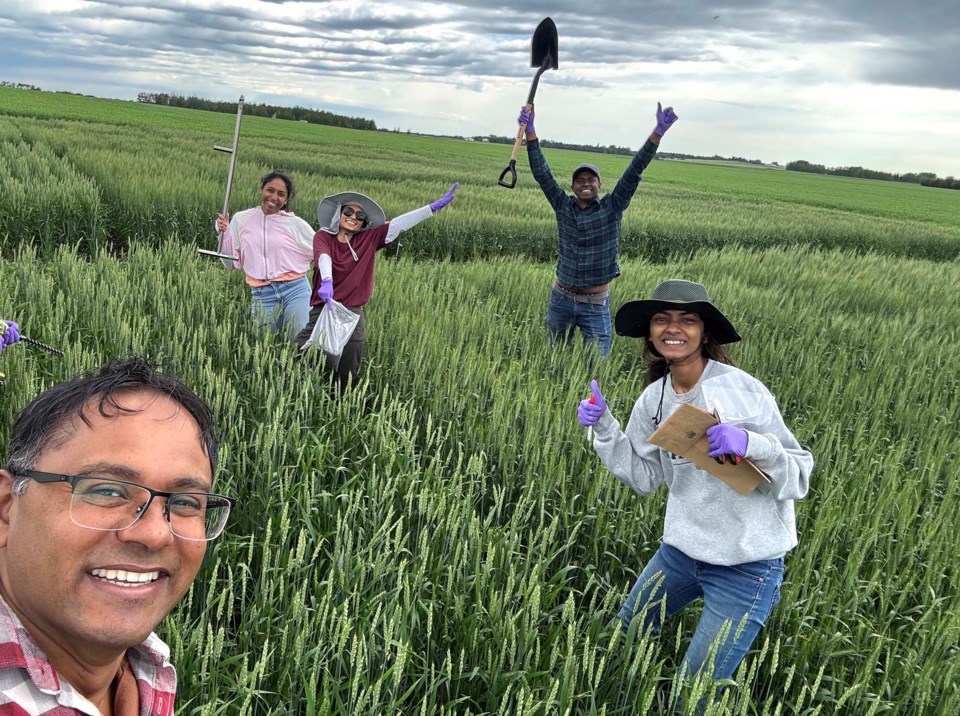Farm scientists hope to prove how fungi can help wheat and canola live in harmony this week at an experimental farm just north of St. Albert.
About 150 farmers and researchers will be at the St. Albert Research Station just north of St. Albert this July 11 for the University of Alberta’s annual Crop Science Field Day. This free event lets researchers showcase the experiments they are growing on the 800-acre farm that is the research station.
Agricultural researchers study everything from plant disease to greenhouse gases at this site to find farm solutions, said field day co-organizer Linda Gorim. Guests at this week’s field day will get to see ongoing experiments in the field and talk to the researchers behind them.
The field day starts at about 8:30 a.m. with coffee, with hop-on, hop-off bus tours of the fields starting at 9, Gorim said. The event wraps up at 12:30 with lunch.
Growing research
Field day co-organizer Malinda Thilakarathna said he and his team will be on site to talk about their research into wheat, canola, and mycorrhizal fungi.
Mycorrhizal fungi grow alongside plants and extend their roots, helping them absorb water and other nutrients, Thilakarathna said. About 90 per cent of the Earth’s plants, including wheat, benefit from mycorrhizal associations. Canola is in the 10 per cent that does not.
“Canola is not a friendly crop for mycorrhizas,” Thilakarathna said, and will release chemicals that inhibit their growth. Since Alberta farmers often plant wheat and canola in rotation, that means their canola crops could hinder the growth of their wheat.
Thilakarathna’s team has planted six types of wheat in soil that hosted canola last year to study these impacts. Half of their test plots have been treated with commercial mycorrhizal inoculant to see if doing so can counteract the effects of the canola. Initial findings suggest that for some wheat varieties the inoculant would let farmers get the same yield using half as much phosphorous, which could save farmers money on fertilizer. Further study could reveal varieties that encourage mycorrhizal growth and bolster drought resistance.
Gorim said her team will talk about their work with biological nitrification inhibition wheat, which is being tested for the first time in western Canada at the St. Albert station. Farmers add nitrogen to soil as fertilizer but always lose some of it to soil bacteria. This wheat inhibits those bacteria, which could reduce fertilizer losses and the amount of planet-heating N2O emitted from the soil.
Gorim said the emphasis at the St. Albert station was on practical research of immediate value to farmers. Farmers use substances called growth regulators on oats to keep them short so they don’t fall over (which lowers yields), for example, but have in recent years been concerned those chemicals could contaminate cereals. Her team started a study last year to address this concern; so far, their research suggests those chemicals are not making it into cereals.
Agricultural experiments can take years to complete, and are always one hailstorm away from disaster. Still, Gorim said she enjoys how this research often yields simple advice farmers can use to improve their operations.
“That’s the joy of it — knowing you’re actually helping out people you know.”
The St. Albert Research Station is east of Hwy. 2 about 1 km north of St. Albert. Visit www.ualberta.ca/en/events/agriculture-life-environment-sciences/2025_crop-science-field-day.html for details on the field day.




